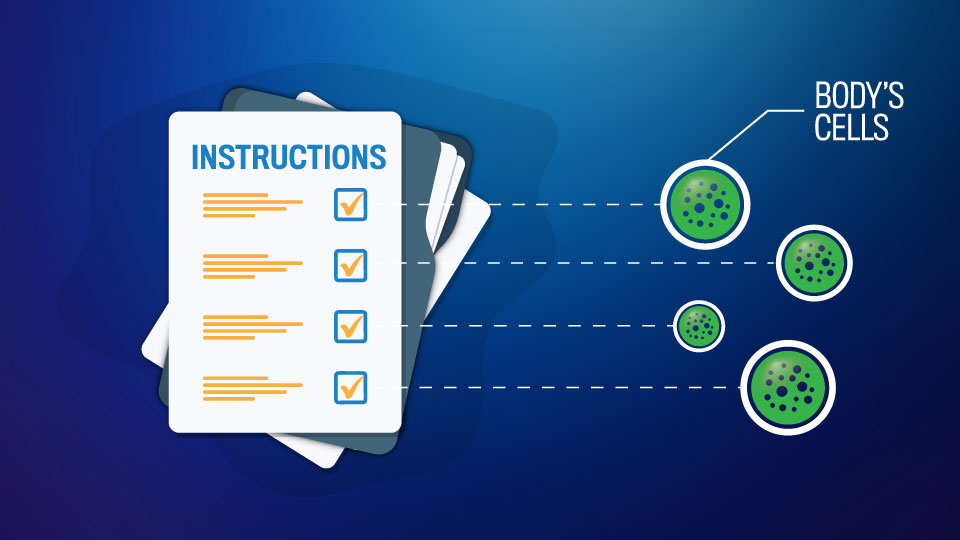It’s understandable that you might have questions or concerns about the COVID-19 vaccine. Many people are worried about how quickly the vaccines were developed and if they have any side effects. During the development of the COVID-19 vaccines, safety was the top priority. No steps were skipped, and the vaccines were rigorously tested. Clinical trials for COVID-19 vaccines didn’t find any specific safety concerns for any one group of people. This means the vaccine is safe for people of all of the ages that were studied, and for any race, ethnicity, those who have underlying medical conditions, and people who have already been infected with the virus that causes COVID-19. And while side effects are possible, the most important thing to remember is that the benefits of getting vaccinated outweigh the risks of getting COVID-19.

Vaccines provide protection against viruses by strengthening our immune system against said virus. This is most often done by injecting a strain of the virus into our system. But the COVID-19 vaccines is different – it’s an mRNA vaccine. Unlike other vaccines, an mRNA vaccine gives our body instructions to make certain proteins, which then teach our immune systems how to fight the virus.
Mild or moderate side effects from a vaccine are normal.
In fact, it means the vaccine is working and your body is learning how to fight off the real virus so you don’t get sick!
It is common to have mild or moderate symptoms or side effects after they get a vaccination. Symptoms you may have after getting the COVID-19 vaccine include:

- injection site pain
- tiredness
- headache
- muscle pain
- chills
- joint pain
- fever
- injection site swelling
- injection site redness
- nausea
- feeling unwell
- swollen lymph nodes (lymphadenopathy)
The COVID-19 clinical trials found that mild to moderate symptoms were pretty common within the first 7 days of receiving the vaccine. These symptoms most often occurred within the first two days after vaccination and would usually only last a day.
These minor symptoms usually happened after the second dose rather than the 1st. This is because the vaccine takes 2 shots to give you the most protection, so it makes sense that your body would be learning how to fight the disease more aggressively after the 2nd shot than the first.
These types of symptoms were also more common in younger people, between 18-55 years old, rather than in older people (those older than 55 years).
Many people are worried about the ingredients in the COVID-19 vaccines and if they will have an allergic reaction to them. The only ingredients in the Pfizer and Moderna vaccines are:
- mRNA – This messenger RNA (mRNA) is for the spike protein of SARS-CoV-2, the virus that causes COVID-19. It’s the instructions for your body to make the protein to fight the virus if you become infected.
- Lipids – These are like little “bubbles of fat” which surround the mRNA like a protective wall. The lipid molecules can’t dissolve in water. They protect the mRNA so that it does not break down before it gets into our cells. There are four different lipids in the Pfizer vaccine and three in the Moderna vaccine. One of the lipids in both vaccines is cholesterol. The lipids are the most likely components of the vaccine to cause allergic reactions.
- Salts and amines – The Pfizer vaccine contains four salts. One is table salt. The salts are used to keep the pH of the vaccine similar to that found in the body, so that the vaccine does not damage cells when it is administered. The Moderna vaccine also contains four chemicals to balance the pH, but two are in a class of organic compounds known as “amines” and two are acetic acid and its salt form, sodium acetate. Acetic acid is the main component of vinegar (other than water).
- Sugar – This ingredient is literally the same as that which you put in your coffee or on your cereal. It is used in both of the vaccines to help keep the “bubbles of fat” from sticking to each other or to the sides of the vaccine vial.
You should not get the COVID-19 vaccine if you’ve had a severe allergic reaction before to one of these ingredients.
The mRNA vaccines do not include any of the following:
- Fetal material
- DNA
- Antibiotics
- Blood products
- Preservatives, like thimerosal
Gluten
Egg proteins
Latex
Pork products
Microchips
Serious side effects from the COVID-19 vaccines are extremely rare.
While a very small percentage of people experienced allergic reactions during the vaccine’s clinical trials (0.6% to be exact), this is approximately the same number of individuals who experienced serious side effects to other vaccines. In addition, a new study from the Centers for Disease Control and Prevention (CDC) found that only 21 cases out of nearly 1.9 million people who have received the COVID-19 vaccines had a severe allergic reaction after receiving the vaccine (Source: https://www.cdc.gov/mmwr/volumes/70/wr/mm7002e1.htm?s_cid=mm7002e1_x).
The vaccine monitoring systems set up by the U.S. Food and Drug Administration (FDA) and the CDC will reveal any possible side effects that may not have been found in the clinical trials. Even long after the clinical trials are finished, these safety monitoring systems will continue to be reviewed by the FDA and the CDC.
Recommendations about who should get the vaccines may change as we continue to learn more about COVID-19 and the vaccines’ effectiveness.
Right now, healthcare providers, long-term care facility staff and residents, first responders, K-12 school staff, and Utahns 70 years and older can get vaccinated in Utah. As more vaccine becomes available, everyone who wants to get vaccinated will be able to. We encourage you to make an informed decision about getting vaccinated. Credible and accurate information on the COVID-19 vaccines can be found at coronavirus-stage.at.utah.gov/vaccine.

